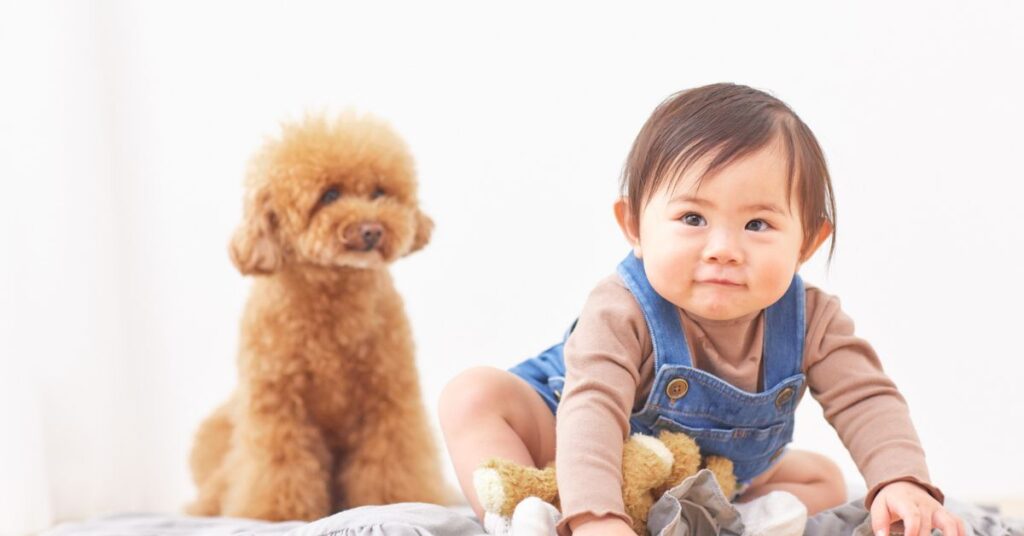By: Bec Harris
Bringing a new baby or puppy into your home is a joyful time, but it can also be stressful for your dog. Without proper preparation, your pet may feel anxious, confused, or even threatened.
Orlando Dos Santos from Results Dog Training shares expert tips on how to create a smooth and safe transition for everyone.
Understand How Dogs Learn
“Dogs learn in two main ways,” explains Orlando. “Through association, and outcomes or consequences.” If your dog associates something with a negative experience, such as being excluded from their favourite spot, they may develop fear or frustration. On the other hand, rewarding calm and positive behaviours will encourage your dog to repeat them.
Why Preparation Is Crucial
“The changes can be quite dramatic, especially if you bring a new baby in,” Orlando says. Without preparation, your dog might act out, and sadly, that often ends with the dog being removed from the home.
To avoid this, Orlando recommends starting the transition eight weeks before the baby’s arrival.
An Eight-Week Timeline to Prepare Your Dog
Here’s the step-by-step plan Orlando suggests:
8 Weeks Before
- Start walking around the house with the pram to get your dog used to it.
- Practice obedience cues like “sit” or “go to your mat.”
- Begin leash training inside with the pram to improve control and familiarity.
6 Weeks Before
- Set up baby gates and introduce new boundaries.
- Begin confinement training using a comfortable space with a chew toy or mat. Make it feel like a reward, not punishment.
3–4 Weeks Before
- Simulate feeding routines and practice quiet time in the nursery.
- Gradually reduce your dog’s attention time to help them adjust to the coming change.
1–2 Weeks Before
- Fully implement your new routine.
- Ensure your dog is comfortable with structured activities and reduced attention.
“This preparation builds predictability,” says Orlando, “which helps balance all the new, unpredictable things that come with a baby.”
Four Effective Ways to Train Your Dog
Whether you’re preparing for a baby or a puppy, these training techniques help reinforce good behaviour:
- Luring: Use treats to guide your dog into a desired behaviour.
- Shaping: Gradually teach your dog to move to a target spot like a mat.
- Targeting: Train your dog to follow or touch an object, like your hand or a post-it note.
- Capturing: Reward calm behaviours like sitting quietly to encourage repetition.
“Capturing is key,” Orlando adds. “When they behave calmly, just quietly drop a treat. That teaches them that calm equals reward.”
Introducing a New Pet
Introducing a puppy or kitten? The process is similar but slightly more forgiving.
Use management, association, and positive training:
- Keep the animals at a distance at first.
- Use a harness and short lead.
- Reward your dog only when the new pet is present and they remain calm.
Avoid “flooding”, or throwing them together too quickly. “If the first meeting goes badly, that negative association sticks,” warns Orlando.
The Right Gear Matters
“When it comes to walking, it’s not just the leash it’s how it’s used,” Orlando explains. A collar can cause pain and stress, especially if your dog pulls. Instead, try:
- Side or front-clip harnesses: These distribute pressure more evenly and reduce pulling.
- Distributor leads: These give your dog a sense of balance and control.
“Keep the pain off your dog and the balance in your dog, and they’ll walk,” he says.
Calm Is Key
Teach your dog to settle and stay calm in one spot, especially when new pets or babies are around. Orlando recommends the Karen Overall Relaxation Protocol for long-term calm behaviour.
“When dogs are calm, they respond better,” he says. “Impulse-driven dogs react. Calm dogs observe and respond thoughtfully.”
Dogs, Babies, and Communication
Children and dogs speak different languages. “Kids look dogs in the eye, grab them. Dogs find that very threatening,” Orlando says.
That’s why education is essential. Learn how to read dog body language, teach kids respectful interactions, and prepare your dog ahead of time.
“Preparation is everything,” Orlando urges. “Because if we don’t do the work, we could lose the dog.”
Need More Help?
Orlando offers a free PDF guide for families preparing to welcome a new baby or pet. He also recommends looking up:
- Dr Karen Overall for relaxation protocols
- Debbie Licktenberg for kids and puppy resources
You can also contact a positive reinforcement dog trainer at least eight weeks before any big changes.
Article supplied with thanks to Sonshine.
Feature image: Canva





